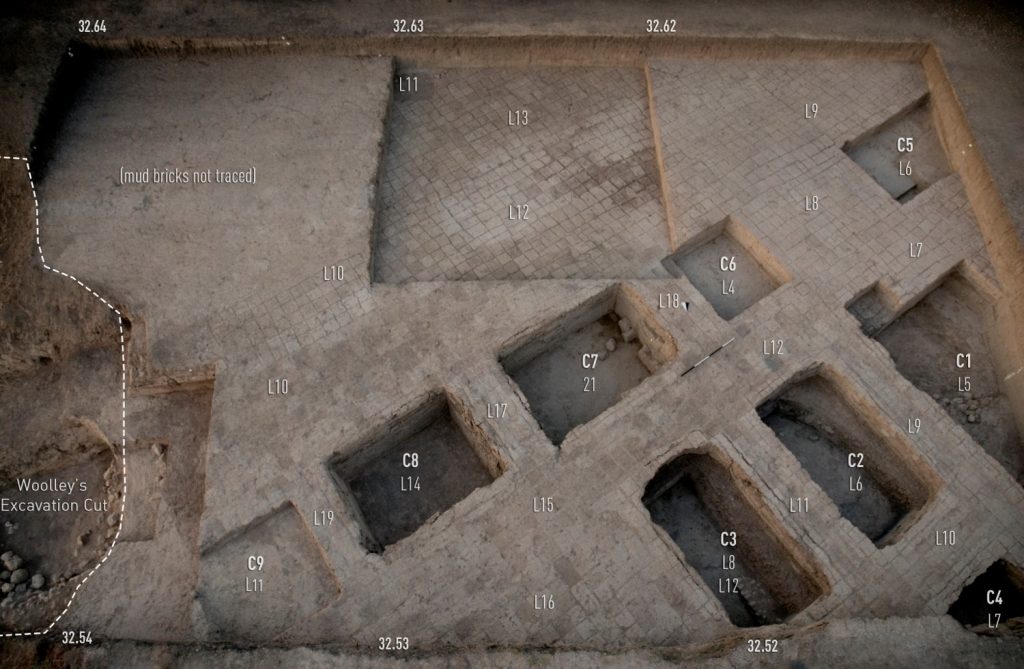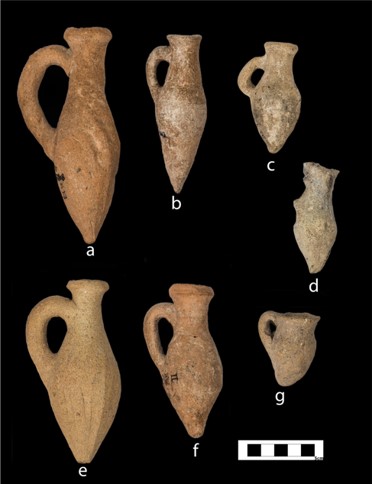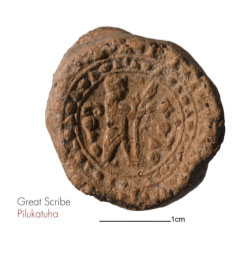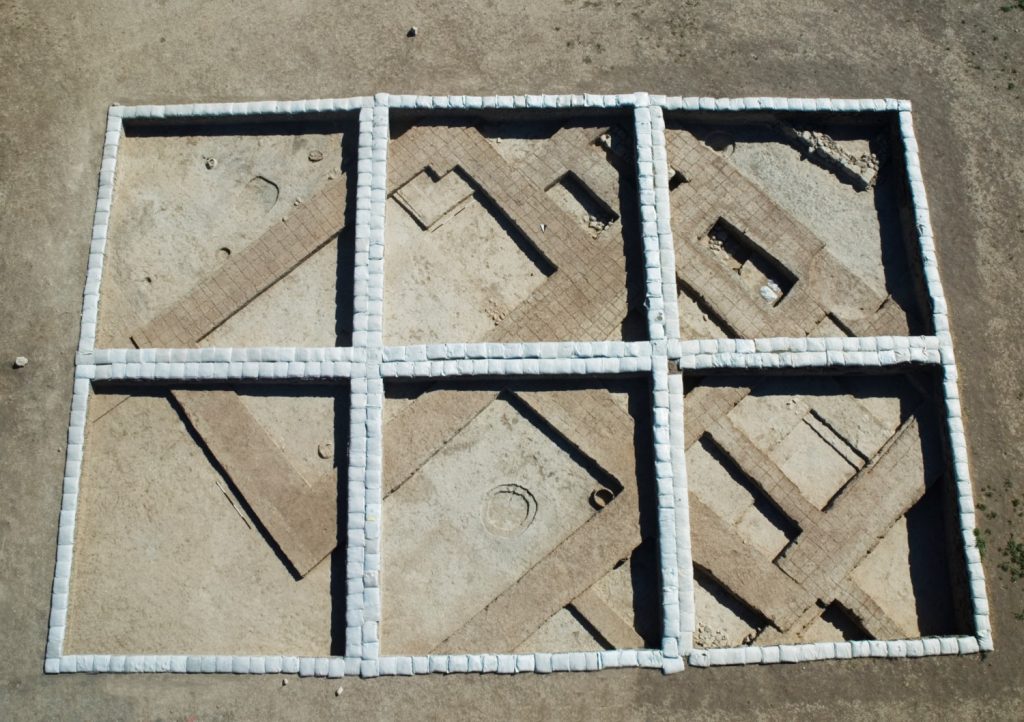LATE BRONZE AGE II (1400-1300 BC)
Although this period as a whole is characterized by the incorporation of Alalakh into the Hittite Empire, new interpretations of Alalakh’s early Late Bronze Age II levels show that, following the destruction of the Level IV palace and castle complex, the castle complex, at least, was successively rebuilt three times, pointing to Alalakh’s continuing function as a capital city at the periphery of the Mitanni and Hittite empires during the 14th century BC. Periods of trauma and changes in political control are characterized by these successful modification phases, though the production of local material culture was not affected directly and Mitannian influence on Alalakh’s material culture remains marked. These modification phases provide enough archaeological and historical space in the history of Alalakh for two kings that are known but not well documented textually: Addu-Nirari, mentioned in the İdrimi Statue inscription, and Itur-Addu, king of Mukiš, who fought against the Hittite king Suppiluliuma I as part of the North Syrian coalition. The remodeling of the castle complex therefore belongs to the time period when Alalakh was still part of the Mitannian realm, and the destruction of the latest reuse of the castle gives an end date to the dynasty of Idrimi at Alalakh.

The arrival of the Hittites is unclear at first and not marked by a major overhaul of the settlement. The earliest evidence for a Hittite administrative presence comes late in Period 3 with several texts that include Hittite names. Following this, though, in Level II, the Hittites made their mark on the cityscape in a dramatic way with the initiation of the largest construction project ever attempted at Alalakh: the Northern Fortress, which likely took place under Suppiluliuma I. However, the fact that there was a documented vassal at Alalakh under Suppiluliuma I indicates that the Northern Fortress platform may have been built by this vassal ruler. This monumental construction project was never finished, resulting in a massive mudbrick foundation that stretched over at least 100 x100 m that was apparently abandoned before a superstructure could be completed.
In contrast to theories that the Hittite settlement at Alalakh was restricted to the Royal Precinct as a fortified administrative complex, the new excavation results provided a strikingly opposite scenario that is best exemplified by our exposure in Area 4 in the southwestern elevated tip of the tell, where a second monumental building was constructed using similar construction methods, dubbed the Southern Fortress. Even though it may be early to give any definite statements about intra-site settlement patterns, these new constructions give the indication of a heavily fortified and commercially active city, rather than an impoverished ruin dominated by invaders. This picture is reinforced by the continued production of local material culture, high numbers of imported Mycenaean goods, and the introduction of several specific types of pottery associated with the Hittite heartland in central Anatolia.



The sudden death of Suppiluliuma I due to a plague that hit the Hittite Empire led to a period of chaos, which may have been responsible for the end of Level II at Alalakh and the abandonment of the Northern Fortress project. Level I follows a brief break in occupation, though the city was apparently reinhabited by the same groups who had previously lived there, based on the continuity of the local material culture. Whether the city was independent for a brief period at this time or whether the reconstruction was conducted under the administration of the new Hittite king, Mursili II, cannot currently be ascertained. However, the city was once again mostly abandoned shortly thereafter, around 1300 BC: no evidence for 13th century BC occupation has been recovered, except for a small area around the temple, which remained in use. Mursili II, known for deporting rebellious populations, may have targeted Alalakh for such a program. Since neither Alalakh nor Mukish is named by the Hittites in their list of allies at the battle of Kadesh, it appears that Alalakh was no longer the center of a vassal state in the 13th century BC but had instead been directly incorporated into the Hittite Empire as a province. The sporadic textual mentions of 13th century BC ‘Mukish’ therefore likely refer not to the Atchana city mound but to a new Hittite administrative center, probably located nearby, either in the area of Tell Tayinat or elsewhere in the Amuq Valley.


